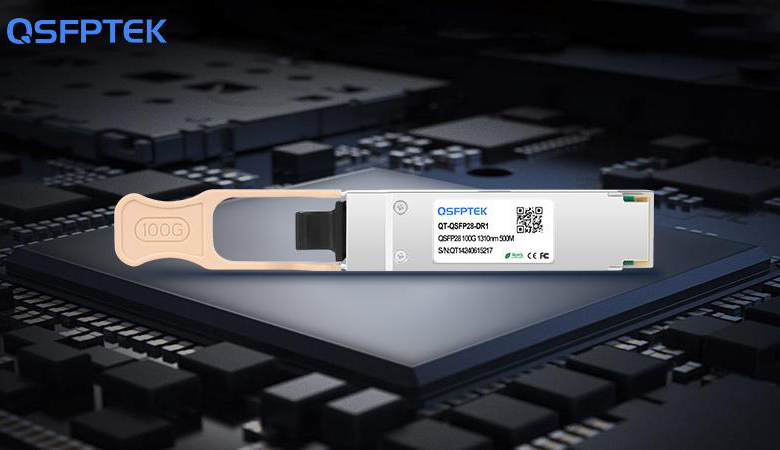Overview and Importance of 100G Optical Modules

Introduction to 100G Optical Modules
In the rapidly evolving landscape of networking, the demand for faster and more efficient data transmission is paramount. This is where 100G optical modules come into play. These modules, designed to support 100 Gigabit Ethernet (100GbE) links, are crucial components in modern networking infrastructure, enabling high-speed data transfer across long distances with minimal latency. 100G optical modules fit seamlessly into data centers, enterprise networks, and telecommunications systems, serving as the backbone of high-performance networking environments. There are several types of 100G optical modules, each tailored for specific use cases and transmission distances. For instance, the 100GBASE-SR4 module is optimized for short-range data transmission, typically within data centers, utilizing multimode fiber. On the other hand, the 100GBASE-LR4 and 100GBASE-ER4 modules are designed for long-range transmissions, capable of covering distances up to 10 kilometers and 40 kilometers, respectively, using single-mode fiber. These various types ensure that 100G modules can be deployed in a wide range of scenarios, making them versatile tools for networking professionals.
Evolution from 10G/40G to 100G
The evolution from 10G and 40G to 100G has been driven by the exponential growth in data traffic and the increasing demands for higher bandwidth in modern networks. As businesses and consumers generate and consume more data than ever before, the limitations of 10G and 40G networks have become increasingly apparent. The leap to 100G has become not just a luxury but a necessity for organizations looking to maintain competitive advantage and meet the demands of today’s digital world. Data centers, in particular, have been at the forefront of this transition, as they require robust and scalable solutions to manage the massive volumes of data generated by cloud computing, big data analytics, and other bandwidth-intensive applications. Telecommunication networks also benefit from the transition to 100G, as they must accommodate the growing number of connected devices and the surge in data traffic driven by the proliferation of streaming services, online gaming, and other digital content. The move to 100G ensures that these networks can deliver faster, more reliable connections, which are critical in maintaining user satisfaction and supporting the future of digital communication.
100G Optical Module Technological Advancements
Technological advancements have played a significant role in enabling the widespread adoption of 100G optical modules. Key among these is the use of PAM4 (Pulse Amplitude Modulation) modulation, which allows the transmission of more data by encoding four distinct signal levels, effectively doubling the data rate without requiring additional bandwidth. This innovation has been instrumental in achieving the higher data rates necessary for 100G modules. Additionally, advanced digital signal processors (DSPs) have been developed to manage the complexities of high-speed data transmission, ensuring signal integrity and reducing the risk of errors. These DSPs perform critical functions such as equalization, error correction, and clock recovery, which are essential for maintaining high performance and efficiency in 100G networks. The integration of these technologies into 100G optical modules has resulted in devices that not only support higher data rates but also operate more efficiently, consuming less power and generating less heat, which are key considerations in the design and operation of large-scale network infrastructures.
The Applications and Use Cases of 100G Optical Module
The applications and use cases for 100G optical modules are diverse, reflecting their importance in modern networking. Data centers are perhaps the most significant beneficiaries of 100G technology, as they rely on high-speed, low-latency connections to ensure the seamless operation of cloud services, virtual machines, and large-scale storage systems. The ability to transmit data at 100Gbps allows data centers to handle the increasing demands of modern applications, such as real-time analytics, artificial intelligence, and machine learning, which require vast amounts of data to be processed quickly and efficiently. Enterprise networks also benefit from 100G optical modules, particularly in environments where large amounts of data are exchanged regularly, such as financial institutions, healthcare providers, and media companies. These organizations require reliable and fast connections to support their critical operations, and 100G modules provide the necessary bandwidth and performance. Additionally, the rise of cloud computing has further increased the demand for 100G optical modules, as cloud providers must ensure that their infrastructure can support the vast amounts of data being moved between data centers and end users.
Conclusion
Looking ahead, the future of optical networking is poised for further evolution, with potential shifts towards 200G, 400G, and even higher data rates. While 100G optical modules currently represent the state-of-the-art in high-speed networking, the relentless growth in data traffic and the ongoing development of new technologies suggest that even faster and more efficient solutions will be required. However, 100G modules will continue to play a critical role in this evolution, serving as a foundation for future advancements.
As the industry moves towards higher data rates, the lessons learned from the deployment and operation of 100G networks will inform the development of next-generation technologies, ensuring that they are both reliable and scalable. Moreover, the ongoing investment in 100G infrastructure by data centers, telecommunications companies, and enterprises ensures that 100G modules will remain relevant and widely used for years to come. In conclusion, while the future of optical networking may lie in even faster technologies, 100G optical modules are and will continue to be, a cornerstone of modern networking infrastructure.
